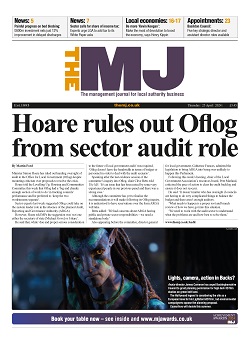It is self-evident the national water policy for England and Wales is failing. Abundant, safe, clean water, was once a universal and valued local community asset for health and wellbeing. This summer saw unprecedented public concern over issues of coastal and inland watercourse pollution, supply failure and drought.
In some local authority areas water is becoming both a blight and a health protection risk as a result of excessive, persistent and avoidable sewerage pollution. For most local authorities, water is now at risk of becoming a ‘stranded asset’; one that has become obsolete and non-performing; one transformed from a public asset into a civic liability.
While the effects of water policy failure are intensely hyper-local, local authorities have little real control over the national water policy or governance system.
For communities, water that falls on their land, passes through their fields and towns or washes up on their shorelines is owned and governanced by distant agencies. These agencies have neither protected nor adequately invested in the water infrastructure necessary to maintain local water assets.
The 2020 National Audit Office (NAO) report on Water Supply and Demand Management states that ‘The Department for Environment, Food & Rural Affairs (Defra) has overall responsibility for setting the policy and regulatory framework for water in England. Its policy has one overarching objective: ‘to ensure clean and plentiful water’.
It expects water companies ‘to provide resilient water supplies supported by robust water resource management plans’. But the NAO report identifies poor leadership by Defra and under-investment by the privatised water companies as key causes of current policy failure. It argues ‘rapid progress is now vital for the Government to deliver its objective of a resilient water supply. Defra needs to provide stronger leadership to water companies, regulators and consumers.’ Government cuts to Environment Agency budgets are also a key part of water policy failure.
A national newspaper reported this month that Environment Agency data shows its river testing has fallen, from nearly 100,000 samples a year in 2012 to 41,519 in 2021 – the lowest level of sampling in 20 years apart from the drop-off during Covid in 2020.
At the heart of the problem is the structure, ownership, governance and accountability of the privatised water companies arising from water privatisation for England and Wales in 1989 .
A recent GMB union report highlights that now ‘at least 71% of shares in England’s nine privatised water companies are owned by organisations from overseas including the super-rich, banks, hedge funds, foreign governments and businesses based in tax havens.’
It will require major reforms to fix these problems, but using public health powers, there may be some things local authorities could do now, within existing legislative frameworks, to begin to take back some control of their community water assets.
Firstly, local authorities might consider creating a comprehensive ‘Local Authority Water Asset Register’. This could be produced annually as an addendum to the statutory health needs assessment required each year by Health and Wellbeing Boards.
Such a register might include data and information on such issues as rainfall, rivers, watercourses, aquifers, canals, sewerage systems, reservoirs, wetlands, flora and fauna of waterways, water biodiversity, blue and green water planning guidance, flood risks, drought risks, pollution sources and pollution events (including plastics), water quality monitoring data, recreational water use (formal and informal), water supply disruptions and details of funding or de-funding of local regulatory and water infrastructure investment.
Next would be for local authorities to assume a ‘water asset management assurance function’ focused on health and wellbeing and lead by the director of public health (DPH). Unlike Ofwat or Defra, the local DPH is employed by and accountable to, both the local population and their elected representatives.
The DPH assurance function largely focuses on the independent collection and analysis of data and reporting on and making recommendations for improvement. The DPH can publish ‘without fear or favour’ in the public domain and has a lead advocacy role for improved policy, strategy, systems and delivery of all ‘health relevant’ public policy.
Lastly, and collectively, local authorities, with the help of the Local Government Association, might consider how better they could hold to financial account the various existing national stakeholders within the current water governance system. This should focus particularly on detailing any quantifiable risks or losses to local communities arising from inadequate water supply, quality, utility, flood protection or access . They would seek both effective prevention of avoidable problems and more proportionate and substantial compensation for affected residents and businesses in the event of failure.
Since 1989, water policy and the privatisation of water companies in England and Wales has delivered handsome financial returns to predominantly overseas shareholders.
Yet it appears that neither goodwill, common sense nor moral imperative have been enough to ensure Defra, Ofwat or the privatised water companies deliver against reasonable public expectations for abundant, safe clean water.
Local authority and community control over water assets will be increasingly important for community health and wellbeing in the coming years. It is now time for local authorities and communities to take back control of at least some of the governance of their most precious and fundamental local asset.
Dominic Harrison is a Visiting Professor in Public Health at the University of Central Lancashire and a former Director of Public Health for Blackburn with Darwen
@ProfDomHarrison



